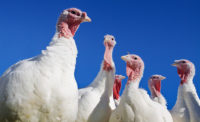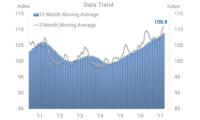Market Snapshot | U.S. Poultry
Production pushes the accelerator




U.S. poultry production during the 12 months through November was up 2.3 percent from last year. Production is rising at an accelerating pace, and our analysis indicates upward momentum will persist through at least the first half of this year. This aligns with trends in overall U.S. food production, which began accelerating in late 2019. If your business faced capacity constraints in recent years, consider increasing your capacity, as annual food production is expected to rise for the next two years. Consider making capital purchases in the near term while interest rates are low. You may be able to get pricing concessions due to relatively low commodity prices and pessimism in the industrial sector.
While food production is expected to rise, we anticipate the consumer side of the U.S. economy will be in a slowing growth trend until late this year. Consequently, consumers may become more price-sensitive this year. Average U.S. consumer prices for chicken in 2019 were virtually even with the 2018 level, while prices for beef and pork rose 1.6 percent and 1.2 percent, respectively. If the relative affordability of chicken compared with beef and pork continues to increase, this may lead to more demand for chicken. Downside risks to the poultry market are also present. The popularity of plant-based meat and poultry alternatives has increased, which has resulted in a number of food services partnering with companies such as Beyond Meat to provide such products. This could hinder demand for poultry. NP
Looking for a reprint of this article?
From high-res PDFs to custom plaques, order your copy today!










